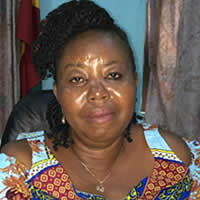Poverty
The multidimensional nature of poverty requires that in designing and implementing poverty reduction programmes, a holistic approach involving all sectors be adopted. It is also important that the poor are involved and programmes are designed to address their specific needs.
Every district has peculiar socio-economic and cultural characteristics, which distinguish it from most other districts. These peculiarities among other things reflect in the poverty status in the various districts. The understanding, dimensions and manifestations of poverty vary within the district is critical for poverty profiling. It is also significant to come to terms with the dimensions and manifestations of poverty in the district with the various classes of people living in the study. Rural poverty is a major concern in the district. Majority of the following are the classes of people who are within the extreme poverty zone in the district.
a) Rural farmers, particularly migrants.
b) People living with HIV/AIDS, including infected persons and families of people living with HIV/AIDS.
c) Displaced communities, particularly those subjected to periodic flooding/drought, negative effects of mining.
d) Disadvantaged women, particularly single mothers, malnourished rural pregnant and nursing mothers, and teenage mothers.
e) The elderly persons who have no access to family care and pension.
f) Physically-challenged persons, particularly those with no employable skills.
g) Unemployed, especially unskilled retrenched workers and the unemployed youth.
Inequality
To buttress this point, the calculated Gini coefficient was 0.65 as shown in Figure 1.24. This means that income inequality in the District was widely spread. In terms of gender, the poverty was negatively skewed to women in the District. The survey strongly showed that agriculture was the main source of household income in both the rural and urban communities followed by trading, wage employment, remittances and others.
Figure 1.24: Calculation of Gini Coefficient in the District
Social Protection
The wide inequality gap presented in figure 1.5 needs a support system for those in the extreme poverty bracket. Social Protection is the base of a secure and acceptable life. Its main objective is to tackle poverty and to protect people from risks and shocks. The district does not have internal social protection programmes; however, central government social protection programmes are available in the district. Central government social protection programmes in the district include: the Livelihood Empowerment Against Poverty (LEAP), the National Health Insurance Scheme (NHIS), the Ghana School Feeding Programmes (GSFP), and the Capitation Grant (CG). Others social programmes include the Rural Enterprise Project (REP), Disable Fund and the HIV support Fund. All these social protection programmes are targeted at giving protection to the vulnerable groups identified under the poverty analysis.
Date Created : 11/24/2017 3:17:21 AM





